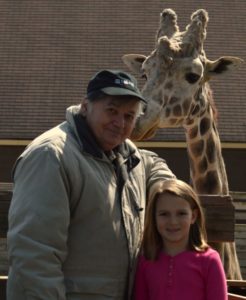My January 2017 column for The Echo
It’s simple when you think of it in a certain context
By Frank DeMarco
Years ago when I was still a book publisher, I met Hank Wesselman at an INATS (International New Age Trade Show) in Denver, and he and I traded copies of our books. I read his first book, Spiritwalker, with interest, as I did with the two succeeding volumes of trilogy – Medicinemaker and Visionseeker – when they came out in later years. In 2009, I did one of his weeklong workshops in Oregon, along with Dirk Dunning, a friend with whom I have done several programs at The Monroe Institute. So, I came to know his material pretty well.
I don’t know about you, but I judge a book’s information by its effect on me. Ernest Hemingway said every writer needs an internal crap detector, and in my view that goes for readers, as well. When I read Spiritwalker for the first time, not only did my crap detector not go off, it strongly indicated that these books were telling important truths. I am far more skeptical of “science” than Hank is (he is an anthropologist by training), but I found his volumes fascinating, particularly in that they are first-hand experiences of communication via non-physical methods. Of course, in those days, I had no independent way to judge the material.
But now I do. In the years since I first read those books, I have been exposed to a lot of first- and second-hand information from the non-physical world. First came the information that Rita Warren and I received in 201-2002, and then, in the past two years, the material Rita fed me, several years after her transition from the 3D to the non-3D world. That material changed the mental world I live in, as it has done for many others.
Last month, in response to a prompting out of nowhere I can identify, I reread Hank’s trilogy, and found that what I have learned from Rita have made Hank’s books read very differently. First-hand experience will do that! Some things that I puzzled over at first reading, or took on faith, now seem obviously, inevitably true. Take this sentence, for instance, from Spiritwalker:
“Kahunas believed that everything in the everyday world has an ordinary aspect `here’ and a nonordinary aspect in the spirit realms.”
When I first read that sentence, years ago, I didn’t know what to make of it. All it said to me was that certain men believed a certain thing for reasons of their own which they did not divulge, and which the author did not explain. I don’t think this came from any desire on their part – or Hank’s – to deliberately mystify the subject. I think they just took it for granted and didn’t think to try to explain. I didn’t have the key.
But now I do. In the light of my long dialogues with Rita and others, I saw that this is just simple truth. In light of Rita’s explanation of the essential unbreakable oneness that is the 3D and non-3D world, the statement is not only sensible, but obvious, almost too simple to need stating.
It really is simple. Even the great god Science knows that reality consists of more than three dimensions plus time. Scientists are arguing about whether reality consists of six dimensions, or 12, or perhaps more, but for our purposes, how many there are doesn’t matter. However many there are, we are in all of them, even though we commonly perceive only height, breadth and length, and time.
We are in all of them, whether we know it or not, because there is no way we can not be. If you are in any, you are in all, in the same way you cannot be in height and depth, say, but not length. Rita explained that those dimensions we do not experience directly, we experience as aspects of time. As our ability to experience additional dimensions improves, they are, in effect, subtracted from our experience of time, so that time itself seems to change for us.
And if we are in all dimensions, so is everything else. Thus we live in the ordinary world (what Rita calls the 3D) and the non-ordinary world (the non-3D). So of course everything has one aspect here and one there. “Here” and “there,” in context, are parts of the same indivisible oneness.
In the second book of the trilogy, Medicinemaker, Hank quotes mythologist Joseph Campbell:
“The great key to understanding myth and symbol is that the two realities, ordinary and nonordinary, are actually one. The deed of the hero is to explore both dimensions and then return, to teach again what has been correctly taught and incorrectly learned a thousand times throughout human history.”
Plain, simple truth, but as usual, truth is more easily understood in its proper context.



